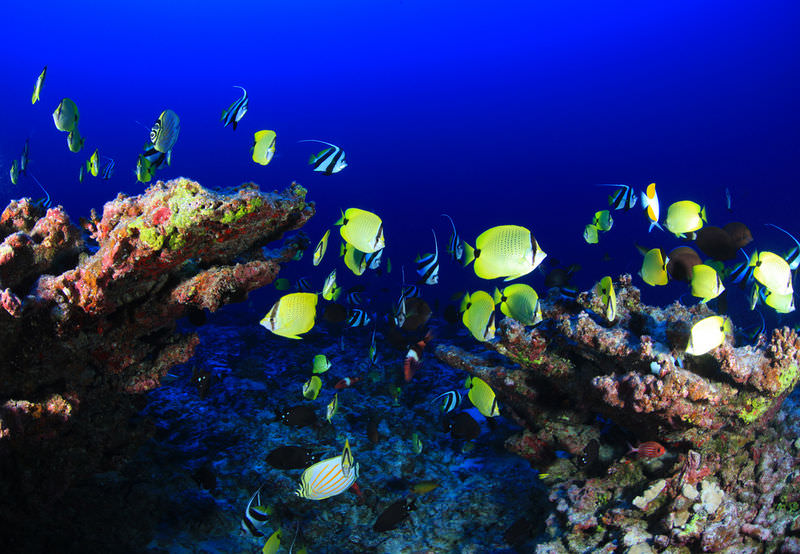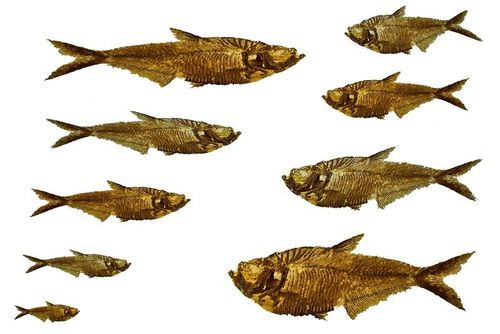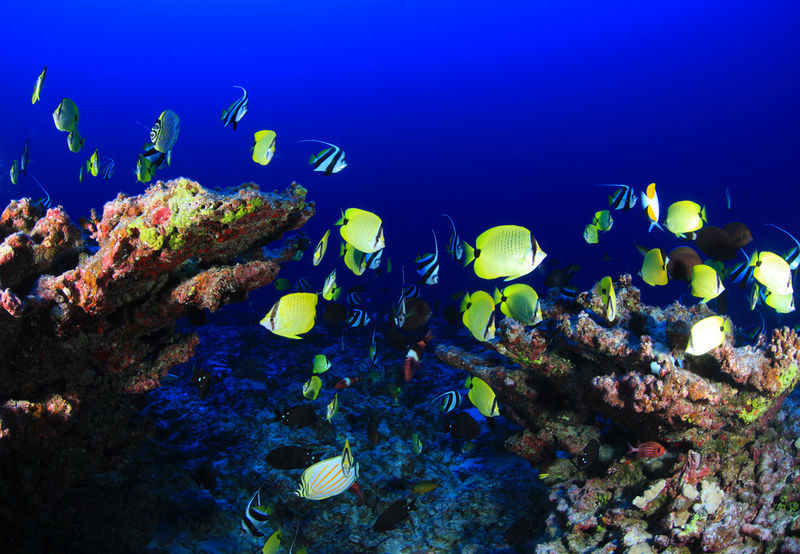12.33: Fish Evolution and Ecology
- Page ID
- 13237
\( \newcommand{\vecs}[1]{\overset { \scriptstyle \rightharpoonup} {\mathbf{#1}} } \)
\( \newcommand{\vecd}[1]{\overset{-\!-\!\rightharpoonup}{\vphantom{a}\smash {#1}}} \)
\( \newcommand{\dsum}{\displaystyle\sum\limits} \)
\( \newcommand{\dint}{\displaystyle\int\limits} \)
\( \newcommand{\dlim}{\displaystyle\lim\limits} \)
\( \newcommand{\id}{\mathrm{id}}\) \( \newcommand{\Span}{\mathrm{span}}\)
( \newcommand{\kernel}{\mathrm{null}\,}\) \( \newcommand{\range}{\mathrm{range}\,}\)
\( \newcommand{\RealPart}{\mathrm{Re}}\) \( \newcommand{\ImaginaryPart}{\mathrm{Im}}\)
\( \newcommand{\Argument}{\mathrm{Arg}}\) \( \newcommand{\norm}[1]{\| #1 \|}\)
\( \newcommand{\inner}[2]{\langle #1, #2 \rangle}\)
\( \newcommand{\Span}{\mathrm{span}}\)
\( \newcommand{\id}{\mathrm{id}}\)
\( \newcommand{\Span}{\mathrm{span}}\)
\( \newcommand{\kernel}{\mathrm{null}\,}\)
\( \newcommand{\range}{\mathrm{range}\,}\)
\( \newcommand{\RealPart}{\mathrm{Re}}\)
\( \newcommand{\ImaginaryPart}{\mathrm{Im}}\)
\( \newcommand{\Argument}{\mathrm{Arg}}\)
\( \newcommand{\norm}[1]{\| #1 \|}\)
\( \newcommand{\inner}[2]{\langle #1, #2 \rangle}\)
\( \newcommand{\Span}{\mathrm{span}}\) \( \newcommand{\AA}{\unicode[.8,0]{x212B}}\)
\( \newcommand{\vectorA}[1]{\vec{#1}} % arrow\)
\( \newcommand{\vectorAt}[1]{\vec{\text{#1}}} % arrow\)
\( \newcommand{\vectorB}[1]{\overset { \scriptstyle \rightharpoonup} {\mathbf{#1}} } \)
\( \newcommand{\vectorC}[1]{\textbf{#1}} \)
\( \newcommand{\vectorD}[1]{\overrightarrow{#1}} \)
\( \newcommand{\vectorDt}[1]{\overrightarrow{\text{#1}}} \)
\( \newcommand{\vectE}[1]{\overset{-\!-\!\rightharpoonup}{\vphantom{a}\smash{\mathbf {#1}}}} \)
\( \newcommand{\vecs}[1]{\overset { \scriptstyle \rightharpoonup} {\mathbf{#1}} } \)
\( \newcommand{\vecd}[1]{\overset{-\!-\!\rightharpoonup}{\vphantom{a}\smash {#1}}} \)
\(\newcommand{\avec}{\mathbf a}\) \(\newcommand{\bvec}{\mathbf b}\) \(\newcommand{\cvec}{\mathbf c}\) \(\newcommand{\dvec}{\mathbf d}\) \(\newcommand{\dtil}{\widetilde{\mathbf d}}\) \(\newcommand{\evec}{\mathbf e}\) \(\newcommand{\fvec}{\mathbf f}\) \(\newcommand{\nvec}{\mathbf n}\) \(\newcommand{\pvec}{\mathbf p}\) \(\newcommand{\qvec}{\mathbf q}\) \(\newcommand{\svec}{\mathbf s}\) \(\newcommand{\tvec}{\mathbf t}\) \(\newcommand{\uvec}{\mathbf u}\) \(\newcommand{\vvec}{\mathbf v}\) \(\newcommand{\wvec}{\mathbf w}\) \(\newcommand{\xvec}{\mathbf x}\) \(\newcommand{\yvec}{\mathbf y}\) \(\newcommand{\zvec}{\mathbf z}\) \(\newcommand{\rvec}{\mathbf r}\) \(\newcommand{\mvec}{\mathbf m}\) \(\newcommand{\zerovec}{\mathbf 0}\) \(\newcommand{\onevec}{\mathbf 1}\) \(\newcommand{\real}{\mathbb R}\) \(\newcommand{\twovec}[2]{\left[\begin{array}{r}#1 \\ #2 \end{array}\right]}\) \(\newcommand{\ctwovec}[2]{\left[\begin{array}{c}#1 \\ #2 \end{array}\right]}\) \(\newcommand{\threevec}[3]{\left[\begin{array}{r}#1 \\ #2 \\ #3 \end{array}\right]}\) \(\newcommand{\cthreevec}[3]{\left[\begin{array}{c}#1 \\ #2 \\ #3 \end{array}\right]}\) \(\newcommand{\fourvec}[4]{\left[\begin{array}{r}#1 \\ #2 \\ #3 \\ #4 \end{array}\right]}\) \(\newcommand{\cfourvec}[4]{\left[\begin{array}{c}#1 \\ #2 \\ #3 \\ #4 \end{array}\right]}\) \(\newcommand{\fivevec}[5]{\left[\begin{array}{r}#1 \\ #2 \\ #3 \\ #4 \\ #5 \\ \end{array}\right]}\) \(\newcommand{\cfivevec}[5]{\left[\begin{array}{c}#1 \\ #2 \\ #3 \\ #4 \\ #5 \\ \end{array}\right]}\) \(\newcommand{\mattwo}[4]{\left[\begin{array}{rr}#1 \amp #2 \\ #3 \amp #4 \\ \end{array}\right]}\) \(\newcommand{\laspan}[1]{\text{Span}\{#1\}}\) \(\newcommand{\bcal}{\cal B}\) \(\newcommand{\ccal}{\cal C}\) \(\newcommand{\scal}{\cal S}\) \(\newcommand{\wcal}{\cal W}\) \(\newcommand{\ecal}{\cal E}\) \(\newcommand{\coords}[2]{\left\{#1\right\}_{#2}}\) \(\newcommand{\gray}[1]{\color{gray}{#1}}\) \(\newcommand{\lgray}[1]{\color{lightgray}{#1}}\) \(\newcommand{\rank}{\operatorname{rank}}\) \(\newcommand{\row}{\text{Row}}\) \(\newcommand{\col}{\text{Col}}\) \(\renewcommand{\row}{\text{Row}}\) \(\newcommand{\nul}{\text{Nul}}\) \(\newcommand{\var}{\text{Var}}\) \(\newcommand{\corr}{\text{corr}}\) \(\newcommand{\len}[1]{\left|#1\right|}\) \(\newcommand{\bbar}{\overline{\bvec}}\) \(\newcommand{\bhat}{\widehat{\bvec}}\) \(\newcommand{\bperp}{\bvec^\perp}\) \(\newcommand{\xhat}{\widehat{\xvec}}\) \(\newcommand{\vhat}{\widehat{\vvec}}\) \(\newcommand{\uhat}{\widehat{\uvec}}\) \(\newcommand{\what}{\widehat{\wvec}}\) \(\newcommand{\Sighat}{\widehat{\Sigma}}\) \(\newcommand{\lt}{<}\) \(\newcommand{\gt}{>}\) \(\newcommand{\amp}{&}\) \(\definecolor{fillinmathshade}{gray}{0.9}\)
Are there actually ecosystems in the ocean?
There are. Different types of fish live in different types of ecosystems. Shown above are tropical fish in a coral reef ecosystem. Some fish are deep-ocean bottom dwellers, whereas others live in shallow waters. Other fish may not be able to survive in the ocean, as they need freshwater.
Evolution of Fish
The evolution of fish from hagfish to finned fish is a long and involved process. One step in this evolution involves the change in function of gills. Invertebrate chordates use their gills to filter food out of water, not to absorb oxygen. In the early evolution of fish, there was a switch to using gills to absorb oxygen instead of to filter food. Gills consist of many thin, folded tissues that provide a large surface area for oxygen uptake. With more oxygen absorbed by the gills, fish could become much larger and more active.
 Fossilized fish shown in different sizes.
Fossilized fish shown in different sizes.Timing of Fish Evolution
Ancestors of hagfish are thought to have been the earliest vertebrates. Their fossils date back to about 550 million years ago. Fossils of cartilaginous fish with jaws, resembling living sharks, first appeared in the fossil record about 450 million years ago. They were followed about 50 million years later by the bony fish.
The Bony Fish
At first, the lobe-finned bony fish were much more common than the ray-finned bony fish that dominate today. Lobe-finned fish were also ancestral to amphibians. Their stump-like appendages and lung-like organs evolved into amphibian legs and lungs. Ray-finned bony fish may have been the first fish to evolve in freshwater. They eventually became the most diverse and dominant class of fish.
Ecology of Fish
The habitats and diets of fish are varied. They live throughout the ocean and also in freshwater lakes, ponds, rivers, and streams. However, there is one fish, the Mudskipper, that spends time on land.
Fish Food
Most fish are predators, but the nature of their prey and how they consume it differs from one class to another and even within classes.
- Hagfish are deep-ocean bottom dwellers. They feed on other fish, either living or dead. They enter the body of their prey through the mouth or anus. Then they literally eat their prey from the inside out.
- Lampreys generally live in shallow ocean water or freshwater. They either consume small invertebrates or suck blood from larger fish with their sucker mouth.
- Cartilaginous fish such as sharks may live on the bottom of the ocean. However, most live in the water column. They prey on other fish and aquatic mammals or else consume plankton.
- Bony fish may live in salt water or freshwater. They consume a wide range of foods. For example, they may eat algae, smaller fish, detritus, or dead organisms, depending on the species of fish.
Fish at Risk
Today, more than 1,000 species of fish are at risk of extinction. This is mainly because of human actions. Specific causes include over-fishing and habitat destruction caused by water pollution, dam building, and the introduction of non-native species.
Summary
- The evolution of fish included a shift from using the gills for filtering food to using them to absorb oxygen from water.
- The earliest fish, resembling living hagfish, evolved about 550 million years ago.
- Adaptations that eventually evolved in fish include a complete vertebral column, jaws, and an endoskeleton made of bones instead of cartilage.
- Fish live throughout the ocean and in freshwater lakes and streams.
- Most fish are predators, but the nature of their prey and how they consume it may vary.
- Many species of fish are threatened by human actions, such as water pollution and overfishing.
Review
- Which fish were the ancestors of amphibians?
- Describe the eating habits of hagfish and lampreys.
| Image | Reference | Attributions |
 |
[Figure 1] | License: CC BY-NC |
 |
[Figure 2] | Credit: Image copyright tonyz20, 2014 Source: http://www.shutterstock.com License: Used under license from Shutterstock.com |

